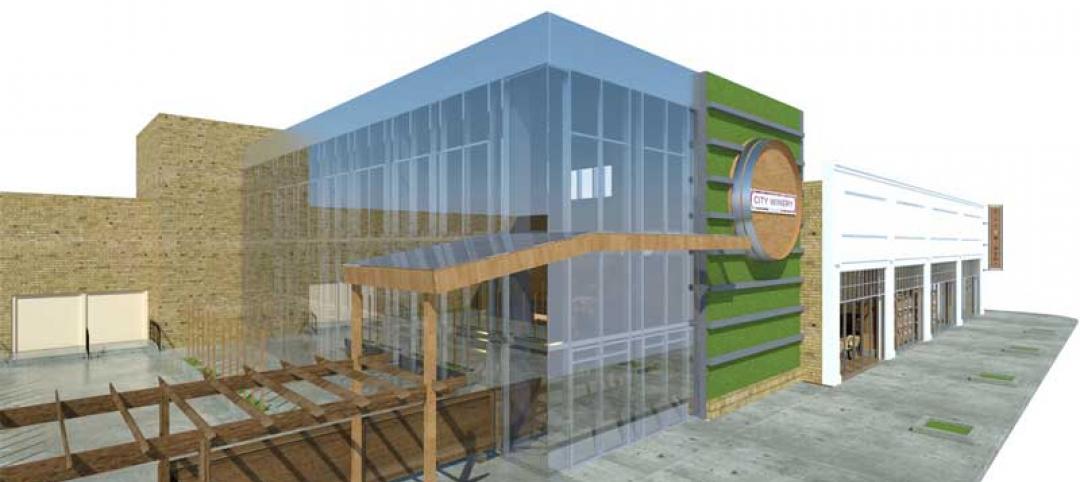 |
|
Milwaukee City Hall, built in 1896, recently underwent a meticulous reconstruction and renovation that lasted more than four years. |
When Milwaukee's City Hall was completed in 1896, it was, at 394 feet in height, the third-tallest structure in the United States. Designed by Henry C. Koch, it was a statement of civic pride and a monument to Milwaukee's German heritage. It was placed on the National Register of Historic Places in 1973 and designated a National Historic Landmark in 2005.
The massive bell tower of City Hall is supported by an armature of vertical and sloping steel trusses and beams embedded within four ornamental masonry and terra cotta gable facades. The design motif is echoed by 20 smaller gables on the east and west facades and larger cross gables at the center and north end of the building. The focus of each gable in the south tower is a white-faced, illuminated clock, just as in the main tower. Coal-fired boilers provided steam heat for the building and drive for the turbines of four DC power generators.
Over the building's century-plus life, the repetitive freeze-thaw cycles of the upper Midwest, combined with the absence of cavity walls for proper drainage, permitted water to damage the building's entire structure and skin. Over time, water from rain, sleet, hail, snow, condensation, and absorption had all but destroyed the integrity of the building's terra cotta and brick envelope, and its steel frame was slowly corroding within its perpetually damp masonry walls.
 |
|
A full building assessment of the exterior condition of Milwaukee City Hall was done before construction began. |
In 2001, the Milwaukee Common Council approved funding for a forensic investigation of the building's envelope. The New York office of Simpson Gumpertz & Heger and Wiss Janney Elstner Associates, Northbrook, Ill., sent engineering teams to assess the building's façade from top to bottom.
Both teams brought grim news. The landmark was in need of immediate and extensive repairs and restoration. Experts were brought in to discuss its restoration, particularly for the primary building materials: brick, terra cotta, stone, copper, and slate. Over a three-day period, the recommendations, protocols, and restoration techniques were compiled in a condition assessment report by WJE and evaluated by a group of experts. The consensus: “Do it right and do it now.”
A multidisciplinary team led by architect Engberg Anderson (restoration design, detailing, and project management), SGH (structural studies, forensic investigations, and design), Bloom Companies (structural engineer) and associate architect Quinn Evans | Architects (historic structures report) was selected, with the WJE report as the underlying document to determine standards and procedures.
Because Milwaukee City Hall was built at a time when “master builders” determined the selection and specification of building materials and systems, the Building Team had to work backwards to understand the cause and effect of building detail failures and to redesign precise details, using modern technology that would allow visual repetition of the original. Original materials that still had visual and physical integrity remained in place.
The best available original drawings were scanned and converted to CAD, enabling the team to replicate the original hand-drawn details of the building's sections and elevations. The plan to redetail the historic building using new methods and materials remained consistent throughout the peer review and construction process.
After general contractor J.P. Cullen & Sons, Janesville, Wis., was selected in 2004, the full Building Team—including major subcontractors— had the first of many meetings to set project goals for the restoration—a process that would continue for more than three years. Coincidentally, during that first meeting a big chunk of terra cotta fell from the south tower onto the copper roof, slid off, and crashed onto the street 200 feet below. The incident underscored the urgency of their task and drew the team together from that day forward.
Forensic, design, construction, and scaffolding engineering included installing temporary steel outrigger beams to the south tower to support the upper scaffolding. This was done to allow a reduction in setback that was required to successfully bring scaffolding closer to the upper reaches of the tower.
More than 19,000 pieces of slate and 115,000 pounds of copper were used. Nineteen hundred windows were restored, and precisely 13,404 pieces of terra cotta were replaced. Two hundred thousand pressed bricks were manufactured using techniques akin to those from which the original bricks were made. Tons of additional structural steel members were used to repair and stabilize the clock tower structure.
Eugene Matthews, a decorative terra cotta manufacturer from Northern California, and brick-making expert IXL Brick from Medicine Hat, Alb., were brought in to replicate these materials in the towers and walls. J.P. Cullen & Sons oversaw the painstaking installation of these materials.
In the end, the restoration more than complied with the Secretary of the Interior's Standards for the Treatment of Historic Properties.
“It's a staggering work of preservation and historical accuracy,” said K. Nam Shiu, PE, SE, vice president at Walker Restoration Consultants and a Reconstruction Awards judge. “It's a handmade building, and it's so very difficult to be that true to the original design intent, down to every building material used.”
Related Stories
| Apr 30, 2012
Gilbane to manage retrofit of the Fraunhofer CSE R&B structure
Building is a first-of-its-kind research and demonstration building for sustainable technologies in Boston's Innovation District.
| Apr 25, 2012
Rogers joins Morgan/Harbour as senior project manager
Rogers will also manage the construction process and daily activities as well as act as the interface between the subcontractors, owners, municipalities and regulatory agencies
| Apr 24, 2012
AECOM design and engineering team realizes NASA vision for Sustainability Base
LEED Platinum facility opens at NASA Ames Research Center at California’s Moffett Field.
| Apr 23, 2012
Vegas’ CityCenter called financial ‘black hole’
Two and a half years ago, stockholders filed six lawsuits after the stock price fell from $99.75 on Oct. 9, 2007, to $1.89 on March 5, 2009. Bondholders sued over similar steep losses.
| Apr 23, 2012
Innovative engineering behind BIG’s Vancouver Tower
Buro Happold’s structural design supports the top-heavy, complex building in a high seismic zone; engineers are using BIM technology to design a concrete structure with post-tensioned walls.
| Apr 23, 2012
Construction underway on City Winery Chicago
The Building Team is maintaining the old brick and timber construction, while adding 5,000-sf of new construction in the form of a two-story addition within the site’s existing courtyard.
| Apr 20, 2012
Century-old courthouse renovated for Delaware law firm offices
To account for future expansion, Francis Cauffman developed a plan to accommodate the addition of an 8-story tower to the building.
| Apr 20, 2012
Shawmut completes Yard House Restaurant in Boston
12,000-sf restaurant marks new addition to Boston’s Fenway neighborhood.
| Apr 17, 2012
Princeton Review releases “Guide to 322 Green Colleges”
The guide profiles 322 institutions of higher education in the U.S. and Canada that demonstrate notable commitments to sustainability in their academic offerings, campus infrastructure, activities and career preparation.
| Apr 16, 2012
University of Michigan study seeks to create efficient building design
The result, the researchers say, could be technologies capable of cutting the carbon footprint created by the huge power demands buildings place on the nation’s electrical grid.
















